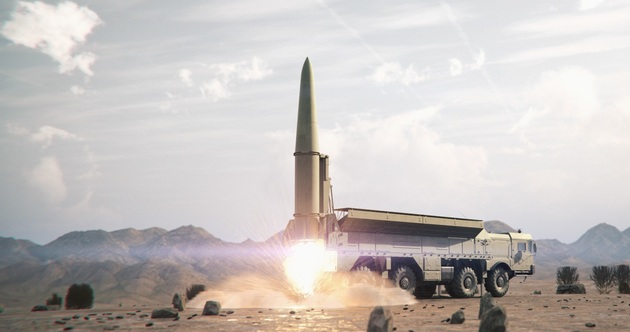The Drive reports on a video that indicates Armenia has fired Iskander ballistic missiles at Azerbaijan. The footage emerged just hours before the two sides signed a Russian-brokered peace deal, which includes major concessions to Azerbaijan.
Its article Video Indicates Armenia Has Fired Its Russian-Made Iskander Ballistic Missiles At Azerbaijan says that a video has emerged on social media showing what appears to be the first instance of Armenia firing its Russian-made Iskander ballistic missiles at Azerbaijani forces. This represents a major escalation in the conflict between the two countries, which erupted in September and is primarily over the disputed Nagorno-Karabakh region. At the same time, the clip appeared just hours before an increasingly embattled Armenian Prime Minister Nikol Pashinyan announced he had signed to a Russian-brokered ceasefire deal, which will reportedly lead to major concessions to Azerbaijan.
It's not clear when the footage of the apparent Iskander launch was shot, but it first appeared online earlier today. While the video quality is low and the transporter-erector-launcher (TEL) and missile are hard to make out, all the evidence points to Iskander, rather than Armenia's Soviet-era Tochka and Scud ballistic missiles. Most notably, the TEL in the clip fires two missiles in relatively quick succession. The TELs for the Tochka and Scud missiles only carry one weapon at a time.
Armenia has already employed Tochka and Scud missiles against Azerbaijani forces, but, despite threats to do so dating back to September, had held off from using its Iskanders. These are its newest and most capable short-range ballistic missiles, which it acquired from Russia in 2016. To date, Armenia is the only country to have purchased the export variant of this weapon system, known as the Iskander-E. It features versions of the missile with a reduced range of around 174 miles to comply with the terms of the Missile Technology Control Regime (MTCR) arms control pact, to which Russia is a party.
The use of the Iskanders after weeks of fighting would seem to have been another unequivocal escalation in the conflict, had they not come ahead of Armenian Prime Minister Nikol Pashinyan's announcement via Facebook that he had signed a deal with Azerbaijan to end the conflict. Russia had helped craft this agreement.
Pashinyan, who had already been the target of increasing criticism over his handling of the conflict, now appears to be in a particularly precarious position despite his calls for national unity. Video has already begun to emerge of protesters converging on his official residence and some 17 opposition political parties in the country have called for his resignation.
Pashinyan certainly appears to have had no good options available to him. Russia and Armenia are both members of the Collective Security Treaty Organization (CSTO) bloc, which includes collective security provisions. However, the Kremlin had said it had no intention of intervening in the conflict unless Armenia itself came under threat.
Armenia, Azerbaijan, and Russia do appear to have made a new and significant push to try to end this conflict.






